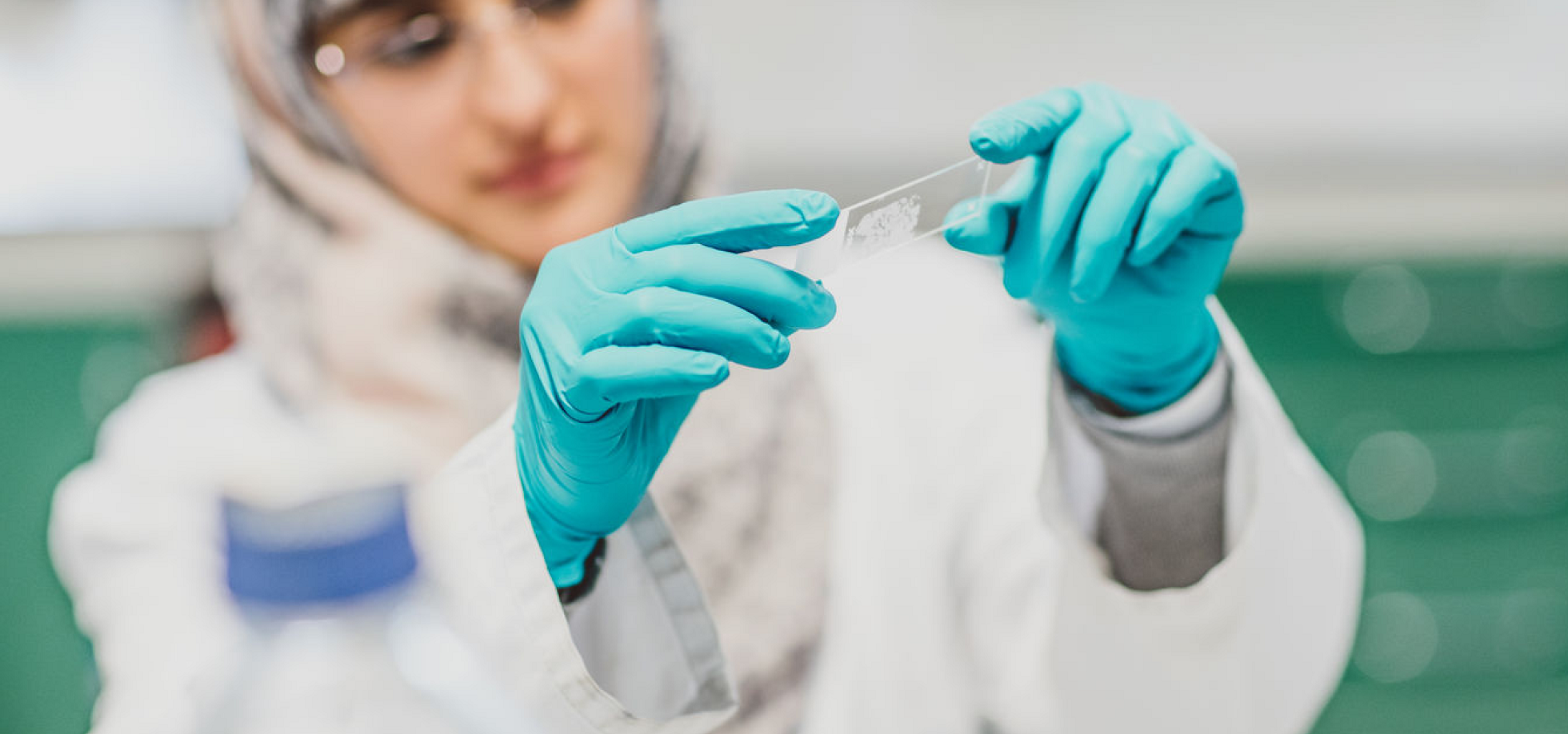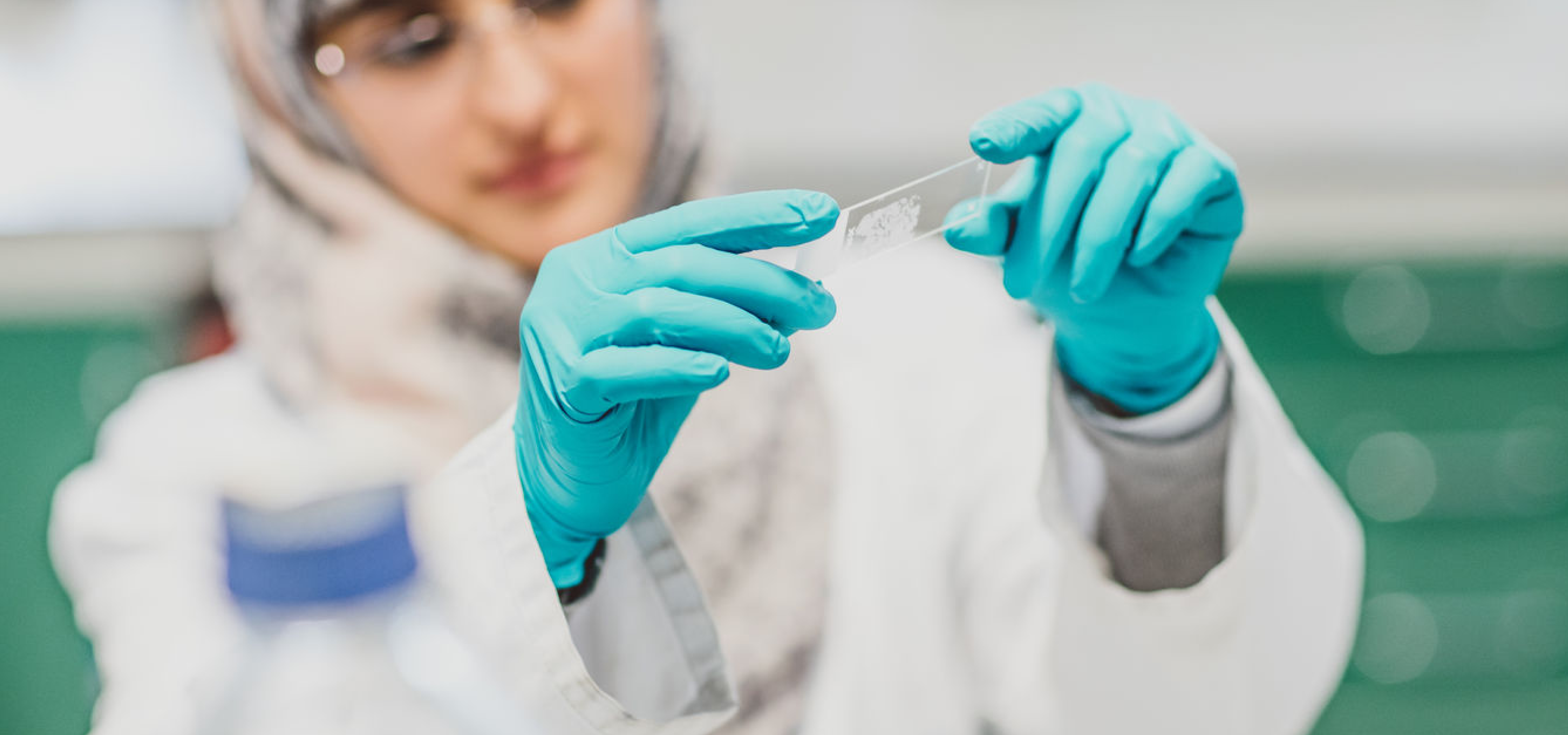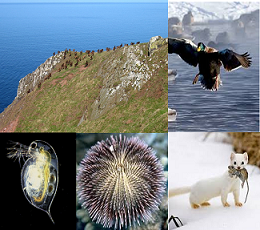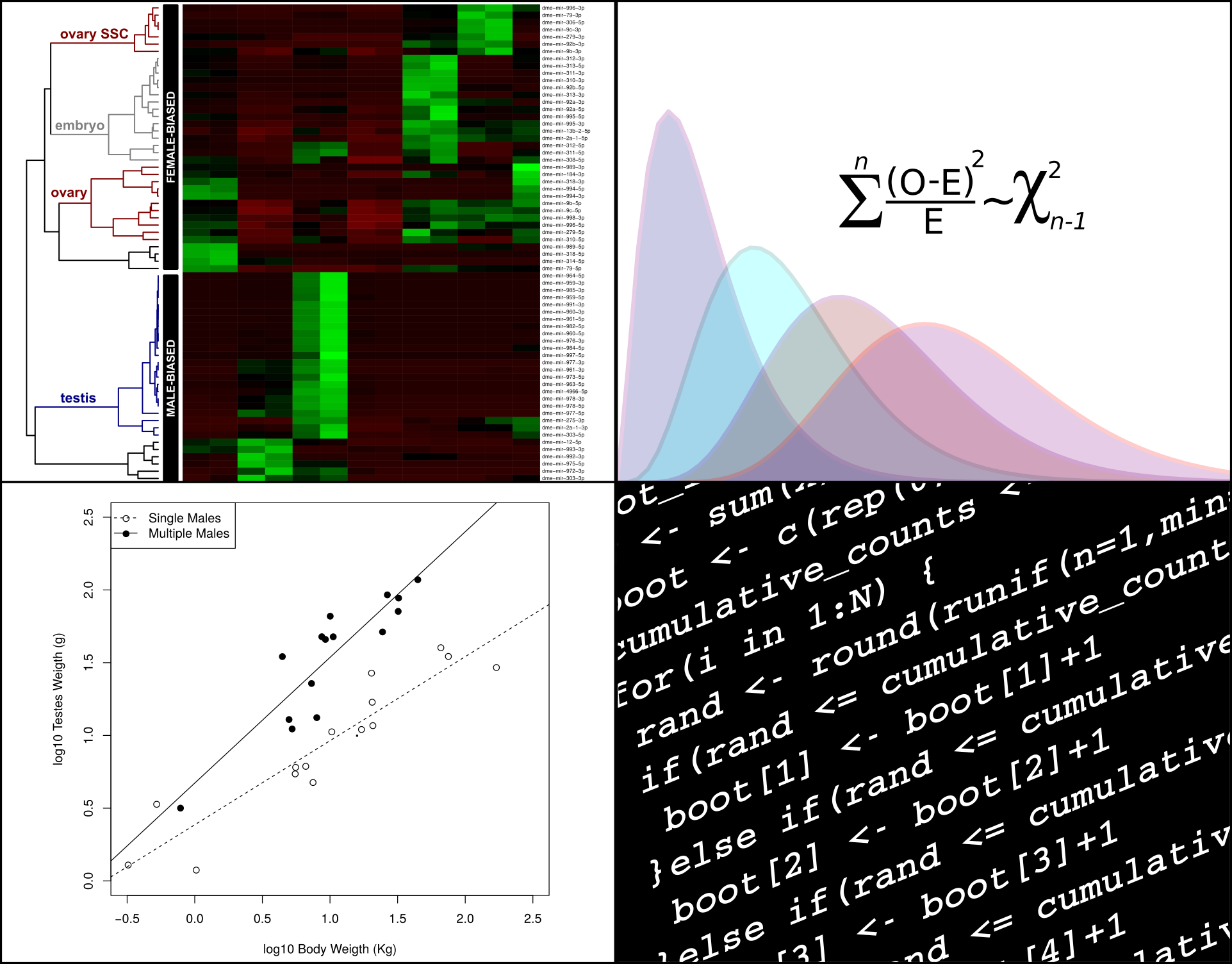- Module Supervisor: Louise Beard
- Module Supervisor: Louise Beard

Module Description:
This module provides an introduction to the study of genetics and evolution. The structure and function of DNA and the expression of the information contained in the genome are explained. The transmission of this genetic information from one generation to the next by the process of cell division and the principles of Mendelian inheritance are then considered. This is followed by modern methods in gene cloning and the applications of this technology. The module then moves on to the Darwinian theory of descent with modification - evolution. We look at genetic variation and genes in populations and consider the role of natural selection in adaptive evolution. Mechanisms of speciation and adaptive radiation will be explored. This brings us up to date with recent studies of phylogenetics and the evolution of genes and genomes, together with the history of all organisms.
Learning Outcomes:
To pass this module students will need to be able to:
1. describe how genes are organised, replicated and repaired, and how the information they contain is expressed;
2. explain the transmission and action of genes at the level of the organism;
3. describe the methods used in DNA technology;
4. explain the evidence for the proposed mechanisms of evolution and their relationship to modern genetics
5. explain the evidence for natural selection and the theories of speciation
6. explain the methods to reconstruct evolutionary relationships, and the main transitions in the history of life
7. demonstrate competence in data collection, interpretation and presentation
- Module Supervisor: Antonio Marco
This module provides an introduction to the study of genetics and evolution. The structure and function of DNA and the expression of the information contained in the genome are explained. The transmission of this genetic information from one generation to the next by the process of cell division and the principles of Mendelian inheritance are then considered. This is followed by modern methods in gene cloning and the applications of this technology. The module then moves on to the Darwinian theory of descent with modification - evolution. We look at genetic variation and genes in populations and consider the role of natural selection in adaptive evolution. Mechanisms of speciation and adaptive radiation will be explored. This brings us up to date with recent studies of phylogenetics and the evolution of genes and genomes, together with the history of all organisms.
Learning Outcomes:
To pass this module students will need to be able to:
1. describe how genes are organised, replicated and repaired, and how the information they contain is expressed;
2. explain the transmission and action of genes at the level of the organism;
3. describe the methods used in DNA technology;
4. explain the evidence for the proposed mechanisms of evolution and their relationship to modern genetics
5. explain the evidence for natural selection and the theories of speciation
6. explain the methods to reconstruct evolutionary relationships, and the main transitions in the history of life
7. demonstrate competence in data collection, interpretation and presentation
- Module Supervisor: Jordi Paps-Montserrat
- Module Supervisor: Corinne Whitby
2. Infectious disease remains a major problem despite many advances in prevention and treatment. This module looks at some of the main types of infectious agents and how they cause the diseases they do.
Learning Outcomes
To pass this module students will need to be able to:
1. define microbiology and demonstrate an understanding of the importance of microorganisms in ecology, disease and industry.
2. explain how microorganisms are classified, describe the basic structure of Bacteria and Archaea, and describe the key differences between Bacteria, Archaea and Eukaryotes
3. demonstrate understanding of the morphological, physiological and genetic diversity of microorganisms and their roles in the natural environment and in infectious disease;
4. describe the structure of viruses and how they interact with cells in infected organisms;
5. work effectively with microorganisms in the laboratory, demonstrating in particular aseptic techniques, serial dilution, estimation of microorganism numbers, response to antibiotics, staining and examination under the microscrope.
- Module Supervisor: Corinne Whitby
Living life on a knife's edge - explore the vital role of plants play in our biosphere, their diversity and intricate relationships that support our planet; know the value of these natural resources; examine the consequences we face when the balance is disturbed.
From studying how plants affect and are affected by their environment you learn what we can expect from a changing world. Examine how we influence the world around us and find out how scientists work together to observe and test diverse views. You apply this knowledge to the field, learning to collect, present, analyse and eventually interpret data.
Understanding the fundamentals of ecology and plant diversity allows you to explore possible solutions to our environmental problems.
Aim:
To introduce students to the diversity, importance and wonder of plants together with an awareness of the biotic and abiotic factors influencing their distribution patterns in the biosphere.
Learning Outcomes:
To pass this module, students will need to be able to:
1. Demonstrate an understanding of the importance of plants;
2. Describe the diversity, evolution and distribution of plants;
3. Explain how abiotic factors and biotic interactions relate to adaptations in anatomy and morphology of angiosperms and to the and the distributions of plants in ecosystems;
4. Explain primary production and nutrient cycling in ecosystems;
5. Explain the unique features of plant biochemistry and metabolism including photosynthesis;
6. Describe the processes that determine Earth's climate (past, present and future), the links between the earth-atmosphere-ocean system and the role of organisms in climate;
7. Describe the effects of humans on ecosystems;
8. Demonstrate competence in observation, experimentation and recording, analysis and presentation through laboratory field, group and individual work.
- Module Supervisor: Ulrike Bechtold
- Module Supervisor: Nicky Slee

The marine realm covers 70% of the Earth's surface. It contains ice-covered seas and hydrothermal vents, muddy estuaries, deep ocean trenches and the clear blue open sea. The oceans and seas are also integral to the whole earth-ocean-atmosphere system, which controls the climate and conditions for life on Earth. The living, physical and chemical parts of the Earth all interact and influence one another, so that it is impossible to consider one aspect without thinking of the others. This module describes the different marine environments, the organisms that inhabit them and their ecological interactions, and the physical and chemical conditions that determine the diversity of marine life. It also discusses how human activity is influencing marine ecosystems, through overfishing, pollution, and climate change.
Learning Outcomes:
To pass this module students will need to be able to:
1. describe the major types of marine communities, the major types of organisms that inhabit these communities and the roles that these organisms play in the marine environment;
2. demonstrate an understanding of the physical and chemical characteristics and processes
within the marine environment;
3. describe the effects of these physical characteristics and processes on the distribution, abundance and productivity of marine organisms;
4. describe key biogeochemical cycling and their importance in the environment;
5. describe how human activities are affecting the marine environment, both directly and indirectly;
6. demonstrate understanding of key scientific measurement concepts and carry out, analyse and present competently basic aquatic physical, chemical, biological measurements and observations.
- Module Supervisor: Michelle Taylor

The diversity of life on planet Earth is breath taking. We share our home with a vast number of species – anywhere between 3 to 100 million. This module scratches the surface of the diversity, evolution, ecology and behaviour of one of the kingdoms most familiar to us – animals.
- Module Supervisor: Thomas Cameron
Learning Outcomes
In order to pass this module, students will need to be able to:
1. describe the key structural features of proteins and explain how protein structure relates to function
2. outline the basic principles of protein structural bioinformatics and protein structural evolution
3. describe how ligand-binding equilibria may form the basis of diverse biological phenomena;
4. describe the structures and functions of the major types of carbohydrates and lipids
5. demonstrate competence in the analysis and interpretation of data, b) written communication, c) biochemical methodology and d) calculation of biochemical parameters.
- Module Supervisor: Gareth Jones
- Module Supervisor: Filippo Prischi

The overall aim of this module is to provide a grounding in chemistry suitable for students of the molecular life sciences.
PART I AUTUMN TERM
In order to fully appreciate the roles of biological molecules it is first necessary to understand how they are formed from individual atoms, and moreover how the properties of these constituent atoms influence molecular structure and reactivity. This part of the module therefore examines in detail fundamental concepts including chemical bonding, electronegativity, acidity, basicity, hydrogen bonding, the range of common organic functional groups and different types of isomerism.
PART II SPRING TERM
In order to fully understand the complex molecular processes involved in the cell it is first necessary to gain an appreciation of the reactivity of simple organic compounds. This part of the module therefore examines in mechanistic detail a range of reactions that model those commonly occurring in biological systems.
Learning Outcomes:
PART I AUTUMN TERM
By the end of this part of the module students should be able to:
1. describe basic chemical principles including the structure of the atom, chemical bonding and layout of the periodic table, and also apply the concept of orbital hybridisation;
2. show how 3 dimensional molecules are represented in 2 dimensions;
3. describe the concept of functional groups and how these groups give rise to characteristic properties including biological activity;
4. describe the nature of stereoisomers and their implications for biological systems.
PART II SPRING TERM
By the end of this part of the module students should be able to:
1. draw mechanisms for a range of organic reactions;
2. describe how the fundamental principles of electronegativity and polarity underpin organic reactions;
3. describe how the reactivity of organic compounds can be related to Lewis and hybridisation models for bonding;
4. demonstrate competence in experimental practice, written communication, and data analysis & interpretation.
- Module Supervisor: Paul Dobbin
The INORGANIC CHEMISTRY component concentrates firstly on small biochemically pertinent molecules containing the p-block elements oxygen, nitrogen, sulfur & phosphorus. The underlying emphasis is on the importance of electron accountancy in structural representations, which leads to comprehension of the action of redox enzymes in metabolism. Also covered are properties of main-group and transition metal cations, followed by an introduction to their roles in biology.
The PHYSICAL CHEMISTRY component is partly directed towards understanding (bio)chemical kinetics and thermodynamics. Emphasis is on determining reaction mechanisms from experimental kinetic data that inform us on reaction orders, reaction rates (and rate constants) and activation energies, plus assessing to what extent a reaction may proceed based on thermodynamic parameters. Also included is an introduction to several types of spectroscopy, which is centred upon considering the effects of absorption of electromagnetic energy by molecules.
LEARNING OUTCOMES:
To pass this module students will need to be able to:
1. describe the structure, bonding & biochemical importance of small molecules containing the p-block elements O, N, S & P;
2. discuss models for structure & bonding of metal ion complexes;
3. describe fundamental thermodynamics and kinetics and perform associated calculations;
4. explain how the absorption of energy by molecules is used as a basis for understanding spectroscopy;
5. demonstrate basic skills in numerical/data analysis & writing chemical formulae & equations
6. show basic practical skills in analytical and preparative chemistry
- Module Supervisor: Dimitri Svistunenko

The aim of this module is to provide all 1st year Bioscience students with the necessary quantitative skills to enhance performance in other first year modules and to prepare you for your second and third year. Students will develop their skills in areas including experimental design, data handling, display and interpretation, basic statistical analysis, and computational data analysis. Teaching and learning will be through a mixture of lectures and practicals.
Learning Outcomes:
To pass this module students will need to be able to:
1. demonstrate an understanding of the scientific method, experimental design and investigation in the biosciences;
2. use scientific units and simple algebra and demonstrate understanding of logarithms, exponentials, geometry and elementary calculus;
3. use basic IT systems effectively for data handling and presentation;
4. be able to analyse data from experiments and draw sound conclusions about the underlying processes using their understanding of mathematics and statistics;
5. be able to analyse biological data using the R programming language.
- Module Supervisor: Antonio Marco
- Module Supervisor: Eoin O'Gorman
- Module Supervisor: Nicolae Zabet
Students will develop their knowledge of the anatomical component parts and major systems of the human body, including the respiratory, cardiovascular, musculoskeletal, digestive, renal, urogenital, nervous and endocrine systems and their relationship to each other. The module will explore the structure and function of these major body systems, how the body is controlled by the nervous and endocrine systems and how homeostasis is maintained. Students will build their vocabulary of the key terminology of anatomy and physiology. The biology of disease processes in the different body systems and the development of their pathology will be addressed using a series of case studies. The impact of lifestyle upon health and the development of age-related diseases will also be explored.
Learning Outcomes
To pass this module, students will need to be able to:
1. describe the structure, function and control of the major organ systems of the body;
2. explain the maintenance of homeostasis in the human body;
3. describe the pathology of certain diseases in different body systems, including age and lifestyle-related diseases;
4. use appropriate scientific methods and approaches to gather, record, analyse and present data and information clearly and informatively;
5. develop key skills related to ICT, numeracy, problem solving, working with others and self-directed learning.
- Module Supervisor: Louise Beard
Learning Outcomes
To pass this module, students will need to be able to:
1. describe the structure, function and control of the major organ systems of the body;
2. explain the maintenance of homeostasis in the human body;
3. describe the pathology of certain diseases in different body systems, including age and lifestyle-related diseases;
4. use appropriate scientific methods and approaches to gather, record, analyse and present data and information clearly and informatively;
5. develop key skills related to ICT, numeracy, problem solving, working with others and self-directed learning.
- Module Supervisor: Louise Beard